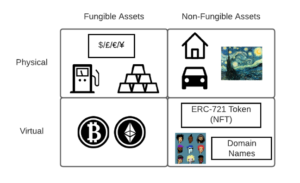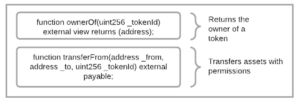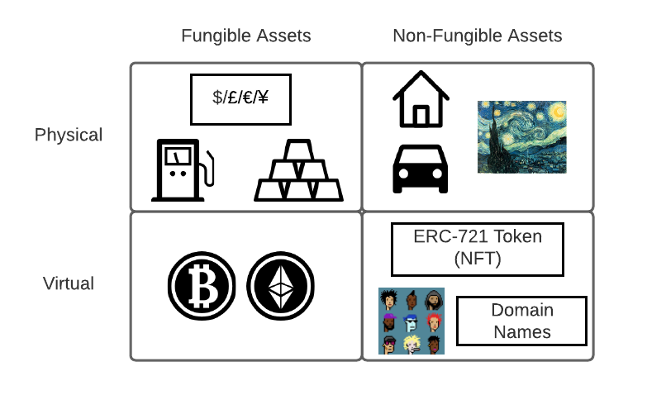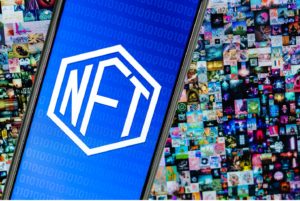NFTs and ITMF
Non-Fungible Tokens are gaining popularity to manage digital content ownership – and IDEA’s Immersive Technology Media Format (ITMF) may be a key to enabling them.
Ownership of Digital Collectibles
With the future edging closer to volumetric and lightfield displays, a new dimension of digital art is soon to be unlocked. Advances in digital content creation (DCC) software and display hardware are enabling new art forms and possibilities of visual entertainment. However, there remains a question mark around the ownership of such forms of media. The answer lies on the blockchain.
The blockchain is an immutable, trustable, decentralized and distributed ledger allowing anyone the ability to query records (blocks). As a transaction occurs, a new block containing a cryptographic hash as a reference to the previous record and a timestamp is linked creating a chain.
Fungible and non-fungible tokens sit at the heart of the blockchain. Beginning with Bitcoin in 2009, fungible tokens or cryptocurrency have largely been its focus. Similar to standard currency, fungible tokens can be exchanged with tokens of the same type, are uniform, and divisible [ERC-20 Token Standard]. The nascent non-fungible tokens (NFTs), or digital certificates, are not interchangeable with another NFT, are unique, and non-divisible [ERC-721 Token Standard]. In addition, any amount of these two types of tokens can be aggregated into a proposed single smart contract to save on transaction costs, processing logic, and enabling a semi-fungible token type [EIP-1155: ERC-1155 Multi Token Standard]. This provides a mechanism for representing contextual ownership and management for digital items.
Examples of fungible and non-fungible assets in the physical and virtual world.
A key difference between fungible and non-fungible tokens is uniqueness. Fungible tokens do not contain unique information, whereas non-fungible tokens do. NFTs provide ownership of digital art, assets, and collectibles that hold properties of uniqueness, near-uniqueness, or scarcity. These include digital assets/collectibles such as audio files, digital art created in DCC workflows, those digitized from physical pieces, videos, gifs, or 3D models, their textures and shaders. NFTs are not limited to virtual assets. Physical assets can also be tokenized creating efficient forms of digital attribution and provenance. Simply, they provide the ability to track distinguishable assets as they are exchanged, since they are stored on the immutable ledger which anyone can view.
The smart contract behind the NFT handles the translation of the token id (an unsigned integer of length 256 bits) to request information. It too allows for the token to be composable meaning the developer can program additional mechanics within the NFT. This layer of programmability in contracts enables complex intricacies to be implemented with the represented source asset.
 Two core functions of the ERC721 specification.
Two core functions of the ERC721 specification.
It is important to note that NFTs do not represent “true” ownership. For example, when a person buys an NFT of a piece of digital art they don’t own the source of the art such as the original source or output image but rather a token that holds metadata that points to the stored rendered output. This metadata can be stored within the smart contract on the blockchain or off-chain usually on a centralized server or the InterPlanetary File System (IPFS). This token id can then be used with a decentralized application (dapp) and the smart contract to “convert” the token to the asset using the metadata.
 How the NFT metadata holding the unique information pertinent to the token id is stored.
How the NFT metadata holding the unique information pertinent to the token id is stored.
Relation to ITMF
The Immersive Technologies Media Format (ITMF) provides an interface for the storage of digital art created using 3D tools. A majority of NFTs use a scene representation, such as the ITMF Scene Graph, assembled with 3D assets, materials, and shaders to produce an image or image sequence. In addition, this scene can be packed into an ITMF Container for interoperability or distribution.
As ITMF is based on ORBX, this is already exemplified with the creation of NFTs through the usage of OTOY’s decentralized rendering platform RNDR. ORBX files containing the 3D scene and its assets are uploaded, and rendered to how the artist wants the final output. At any point, the artist can optionally mint NFTs for the assets, jobs, scenes, or metadata held within the format. In addition, they can elect to mint an ERC721 NFT relating to the final render. These NFTs create a provenance of the original work. The artist can then turn to a marketplace to sell their work with the knowledge that they are protected from unfair attribution of their art.
Holographic and Lightfield Displays
One of IDEA’s primary goals is to provide an interface to create rendering outputs to a heterogeneous array of immersive devices. IDEA’s ITMF will allow a collection to be minted relating to certain displays. Artists can target a render output for a certain legacy, current, or future display, and tokenize it once the render is completed. This creates a market for immersive digital collectibles backed by a ledger.
Decentralized apps could also utilize a minted ITMF file. A full, unique 3D scene which is backed by an NFT may have the ability to be streamed by an application. An application may even provide a real-time and network rendered output to the display without burdening the display with the necessity to store the entire scene. Rather than having a large physical art piece at the center of a room, a mixed-reality, volumetric or lightfield display may replace this to represent works on a digital canvas backed with validated ownership.
The Future
As with all nascent technologies, we are still in the early “Napster days”, but we are seeing an opportunity for individual artists to create work and revenue in a way that was not possible before. There remains endless possibilities, bad actors, and open issues, but ITMF provides the potential to help in many ways.
Currently, an NFT is a token with a contract pointing to a file hosted on IPFS. There is no guarantee that this location lives forever, and should it ever go down, the token loses all of its worth. This remains an open question that needs to be addressed.
Ways to diminish copy posted NFTs (works ripped from websites or social media and minted then sold from people other than the original creator) may be addressed through a referenceable artist archive and associated metadata to validate the uniqueness of a newly minted token. This method and the exact metadata still requires exploration and specification but may live on the contract or the original source such as an ITMF file.
Cataloguing assets and associated tokens is essential in ensuring that no two identical objects are tokenized separately. With digital art that has a scene as its basis, the ability to understand and authenticate the scene graph that the final output is derived from can validate the true uniqueness of the work.
The ITMF Scene Graph will be also key in ensuring that scenes that are sold as an NFT composed of other minted assets, such as 3D models, textures, or shaders, have the proceeds propagate to the asset’s original creator. With its nature of being assembled from smaller assets, scenes may be composed of minted resources enabling a fractionalization of revenue sharing and royalties.
Not all ITMF files will need to be minted, but one with an associated NFT enables ownership of an entire 3D scene with interoperability between applications that may support ITMF, such as DCC tools or ARKit, with flexibility in how the art can be viewed in a 3D space. Artists can implement interactivity within the scene to pursue a level of digital immersive art akin to and beyond popular physical art experiences such as Yayoi Kusama’s Infinity Mirror Rooms. With NFTs and ITMF, digital art becomes truly immersive and not locked to the bounds of an image or video.
Though, like all art and collectibles, the value is in the eye of the beholder. As NFTs are a unique and early concept, there is no telling if the value of currency exchanged for a token will hold. Calculated steps toward ensuring this technology is not abused or exploited will enable careers for digital artists which may never otherwise existed. This is where ITMF and IDEA can help, providing metadata standards for NFTs that allow deeper levels of verification (reducing fraud) and additional layers of value creation (enforceable, open and portable DRM). By advancing standards for NFTs, ITMF and IDEA could help the sector realize the potential of this emerging media format that has the potential to reshape culture in the 2020s.
Further Reading
https://ethereum.org/en/developers/docs/standards/tokens/erc-20/
https://ethereum.org/en/developers/docs/standards/tokens/erc-721/
https://eips.ethereum.org/EIPS/eip-1155#simple-summary
https://opensea.io/blog/guides/non-fungible-tokens/


